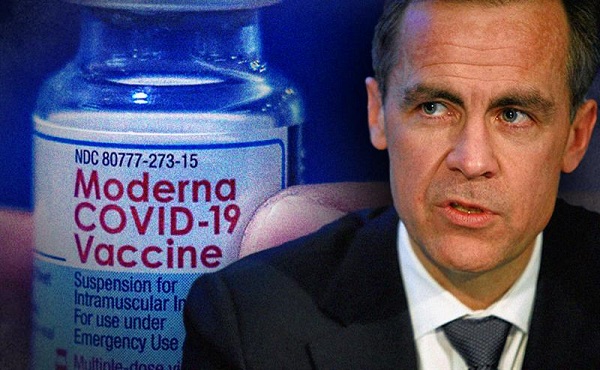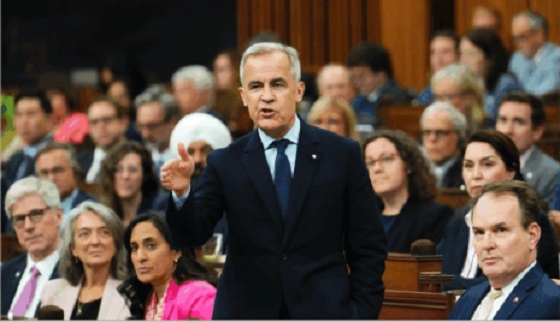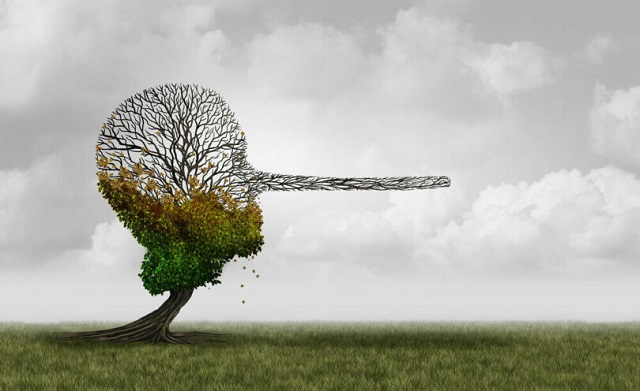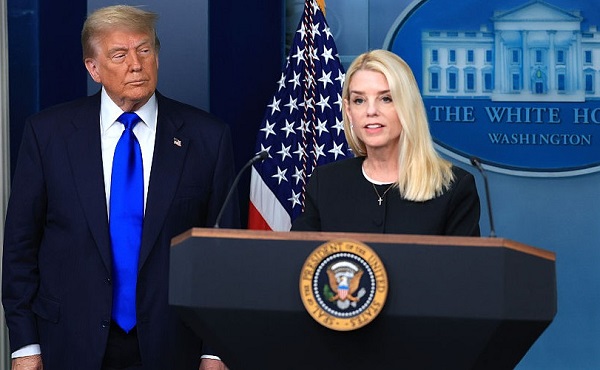Frontier Centre for Public Policy
Christmas: As Canadian as Hockey and Maple Syrup

From the Frontier Centre for Public Policy
By Gerry Bowler
Well, they’re at it again. A year after a Canadian Human Rights Commission position paper labeled Christmas “discriminatory” and an example of “colonialist religious intolerance”, an Alberta public school has cancelled a winter concert because marking Christmas isn’t inclusive enough. The principal of Whitecourt’s Pat Hardy Elementary stated, “Not all students celebrate Christmas, and their families may or may not choose to have them participate in the Christmas concert. Other families celebrate Christmas as a religious holiday but do not want children engaging in the non-religious parts such as Santa, Christmas trees, etc.” It was suggested that a spring concert might be more inclusive, presumably on the theory that no one gets too worked up about the vernal equinox.
The principal’s actions are scarcely news; for years schools and public officials have been reluctant to stage any activity around the celebration of the Nativity. “Christmas concerts” have been relabelled or cancelled; “Christmas trees” have been termed the “Holiday Tree.” Or a “Care Tree.” A “Multicultural Tree.” A “Tree of Lights.” A “Community Tree.” A “Winter Solstice Tree.” A “Grand Tree.” A “Special Tree.” A “Family Tree.” The “Annual Tree.” A “Festive Bush.” A “Unity Tree.” A “Culture Tree.” Activists in Saskatoon objected to city buses displaying a “Merry Christmas” wish; a Toronto judge ordered a Christmas tree removed from the courthouse lest it makes non-Christians feel unwelcome; inspired by the American school that mandated that the lyrics to “Silent Night” be changed to “Silent Night, mmm, mmm, mmm, / All is calm, all is bright, mmm, mmm, mmm”, a principal at an Ottawa school excised the C-word from the ditty “Silver Bells”. Thus: “Ring-a-ling, hear them sing; Soon it will be a festive day.”
There are several ways of dealing with this perennial issue. One is to remove religion from the public square altogether – that would certainly suit the secular fundamentalists – another is to play the majoritarian card and insist that since Christians outnumber other faith communities their will should hold sway. Some might want to dilute any mention of Christianity from the season while others might wish to include every other religion’s holy days on the school calendar.
I have a solution to this seasonal dilemma. It is to adopt the attitude taken by leaders of racial and religious minorities in Canada when asked if they are offended by mentions of Christmas. Their invariable answer is, of course not, Christmas is an integral part of Canadian culture.
Christmas is indeed Canadian, as native to our land as Hockey Night in Canada, Stompin’ Tom Connors, or pineapple on pizza. It has been Canadian longer than poutine, mediocre socialized healthcare, or the last time Toronto won the Stanley Cup. The Vikings who found a home in Newfoundland a thousand years ago likely celebrated Christmas, and there’s no doubt that the holiday has been observed for half a millennium by later European settlers.
Though a current American politician may regard Canada as the 51st state and a current Canadian politician may opine that we are a post-national entity with no core identity, Canada, over the centuries, has developed a unique Christmas culture. We have beautiful carols of our own – “D’où Viens-Tu Bergère?”, the “Huron Carol” (“Jesus Ahatonia”), the first ever written in a North American indigenous language, and J.P. Clarke’s 1853 “A Canadian Christmas Carol”– not to mention secular seasonal music such as “Voici Le Père Noël Qui Nous Arrive” by the legendary Mary Bolduc, the melancholy “River” by Joni Mitchell, Bob and Doug Mackenzie’s take on “The Twelve Days of Christmas” and the immortal “Honky the Christmas Goose,” as sung by Johnny Bower (the last Leaf goalie to win a Stanley Cup).
We have unique Christmas foods – the taffy pull on St Catherine’s day, the tourtière of the revéillon, rapee pie, cipâte, butter tarts, Nanaimo bars, ragoût de pattes, “chicken bones,” and “barley toys.”
Though Santa Claus has his own Canadian postal code (H0H 0H0), we do not count him as a citizen, but we do have our own native Gift-Bringer in the form of Mother Goody (also known as Aunt Nancy or Mother New Year).
Canada can boast the first Christmas tree in North America, the custom introduced by Baroness Frederika von Riedesel whose husband Baron Friedrich Adolphus von Riedesel had brought 4,000 German Brunswicker soldiers in 1776 to protect Canada from American invasion. The first department store Santa was employed in Fredericton, New Brunswick, in 1869. Our post office issued the world’s first Christmas stamp in 1898. Eaton’s department store in Toronto staged the first Santa Claus parade in 1905.
Only in Canada can we see mummers of all sorts at Christmas – Janneys, Ownshooks, Fools, Belsnicklers, and Naluyuks; only in Canada do door to-door canvassers under the guise of “la guignolée” solicit donations to charity while singing a song threatening to torture the oldest daughter of the house.
So the next time objections are raised to the appearance of Christmas in the public square, simply state that it’s a long-standing Canadian custom, sanctified by time and universal practice, as deeply embedded in our culture as the red maple leaf. It’s what we do. Canadians do Christmas.
Gerry Bowler, historian, is a Senior Fellow at the Frontier Centre for Public Policy
Frontier Centre for Public Policy
Canada’s New Border Bill Spies On You, Not The Bad Guys

From the Frontier Centre for Public Policy
By Lee Harding
Lee Harding warns that the federal government’s so-called border bill lets officials snoop on your data, ban big cash payments and even open your mail – all without a warrant
Think Bill C-2 is about stopping fentanyl? Think again. It lets the feds snoop your data, open your mail and ban big cash payments – no warrant needed
The federal government is using the pretext of border security, the fentanyl crisis and transnational crime to push through Bill C-2, legislation that dangerously expands surveillance powers, undermines Canadians’ privacy and restricts financial freedom. This so-called Strong Borders Act is less about protecting borders and more about policing citizens.
Bill C-2, a 130-page omnibus bill introduced on June 3, grants broad new powers to government agencies to spy on Canadians and share personal information with foreign countries. A more honest title might be the Snoop and Gossip Act.
Among its most intrusive provisions, the bill would make it illegal for any business, profession or charity to accept cash payments over $10,000, even if made in smaller, related transactions. Want to pay a contractor $10,001 in five separate payments for home renovations? Too bad.
The Justice Centre for Constitutional Freedoms quickly condemned the move. “Restricting the use of cash is a dangerous step toward tyranny and totalitarianism,” the organization posted to X. “Cash gives citizens privacy, autonomy, and freedom from surveillance by government and by banks.”
Under Bill C-2, internet service providers could be compelled—under threat of fines—to hand over names, locations and “pseudonyms” of users without a warrant. Any peace officer or public officer can demand this data by merely claiming “reasonable grounds to suspect” an offence “has been or will be committed.”
It doesn’t stop there. The bill would also authorize the government to open private mail under the same vague threshold of suspicion.
Experts in law and privacy say the bill is a massive overreach. University of Ottawa internet law scholar Michael Geist and Kate Robertson of the University of Toronto’s Citizen Lab both point out that successive federal governments have sought to expand internet surveillance for years, but Bill C-2 goes further than ever before.
“Bill C-2’s big brother tactics combine expansive warrantless disclosure with unprecedented secrecy,” Geist warns. He adds that the bill “overreaches by including measures on internet subscriber data that have nothing to do with border safety or security but raise privacy and civil liberties concerns.”
If the intent were truly to combat fentanyl trafficking and transnational crime, better tools already exist. Conservative MP Frank Caputo pointed out that the bill has 16 parts but says nothing about increasing penalties or jail time for fentanyl traffickers.
“There is nothing about bail in the bill,” Caputo said during early debate on the bill. “In this omnibus bill, it says that offenders can serve their sentence for trafficking in fentanyl from their couch.”
Bloc Québécois MP Claude DeBellefeuille argued that strengthening border security requires more boots on the ground. Two rural border crossings in her riding recently had their staffed hours cut in half.
“It is estimated that the CBSA (Canada Border Services Agency) already has a shortage of between 2,000 and 3,000 border services officers for current duties. If they are given new responsibilities, however necessary, there will be an even greater shortage,” she said.
Not only does Bill C-2 contradict Supreme Court precedent. It also sets the stage for Canada to share sensitive personal information with foreign governments. In 2014, the court ruled that Canadians have a “reasonable expectation of privacy in the subscriber information” provided to internet service providers and that police requests for such data amount to a “search” requiring a warrant.
Robertson warns that the bill not only defies this precedent but also enables Canada to share this dubiously acquired information with 49 other countries under the Second Additional Protocol to the Cybercrime Convention. Canada signed the agreement in 2023 but hasn’t ratified it. Bill C-2 would make that possible.
She calls the protocol’s weak human rights safeguards “a direct threat to existing protections under international human rights law.” Robertson co-authored a submission urging the Department of Justice to reject the 2AP and instead support data-sharing frameworks that are built on consistent rights protections across all signatories.
Further complicating matters, Canada is in negotiations with the United States over a data-sharing agreement under that country’s CLOUD Act. Canada’s willingness to comply may reflect lingering trade pressures from the Trump administration, pressures that could again push Canada to compromise its legal independence and citizens’ rights.
This bill should be scrapped or thoroughly revised. Canadians should not have to surrender their privacy and human rights to serve a global law enforcement agenda that disregards civil liberties. If the line between national security and authoritarianism is erased, the greatest threat to Canadians may no longer be drug traffickers—it may be their own government.
Lee Harding is a research fellow at the Frontier Centre for Public Policy.
Frontier Centre for Public Policy
New Book Warns The Decline In Marriage Comes At A High Cost

From the Frontier Centre for Public Policy
Travis Smith reviews I… Do? by Andrea Mrozek and Peter Jon Mitchell, showing that marriage is a public good, not just private choice, arguing culture, not politics, must lead any revival of this vital institution.
Andrea Mrozek and Peter Jon Mitchell, in I… Do?, write that the fading value of marriage is a threat to social stability
I… Do? by Andrea Mrozek and Peter Jon Mitchell manages to say something both obvious and radical: marriage matters. And not just for sentimental reasons. Marriage is a public good, the authors attest.
The book is a modestly sized but extensively researched work that compiles decades of social science data to make one central point: stable marriages improve individual and societal well-being. Married people are generally healthier, wealthier and more resilient. Children from married-parent homes do better across almost every major indicator: academic success, mental health, future earnings and reduced contact with the justice system.
The authors refer to this consistent pattern as the “marriage advantage.” It’s not simply about income. Even in low-income households, children raised by married parents tend to outperform their peers from single-parent families. Mrozek and Mitchell make the case that marriage functions as a stabilizing institution, producing better outcomes not just for couples and kids but for communities and, by extension, the country.
While the book compiles an impressive array of empirical findings, it is clear the authors know that data alone can’t fix what’s broken. There’s a quiet but important concession in these pages: if statistics alone could persuade people to value marriage, we would already be seeing a turnaround.
Marriage in Canada is in sharp decline. Fewer people are getting married, the average age of first marriage continues to climb, and fertility rates are hitting historic lows. The cultural narrative has shifted. Marriage is seen less as a cornerstone of adult life and more as a personal lifestyle choice, often put off indefinitely while people wait to feel ready, build their careers or find emotional stability.
The real value of I… Do? lies in its recognition that the solutions are not primarily political. Policy changes might help stop making things worse, but politicians are not going to rescue marriage. In fact, asking them to may be counterproductive. Looking to politicians to save marriage would involve misunderstanding both marriage and politics. Mrozek and Mitchell suggest the best the state can do is remove disincentives, such as tax policies and benefit structures that inadvertently penalize marriage, and otherwise get out of the way.
The liberal tradition once understood that family should be considered prior to politics for good reason. Love is higher than justice, and the relationships based in it should be kept safely outside the grasp of bureaucrats, ideologues, and power-seekers. The more marriage has been politicized over recent decades, the more it has been reshaped in ways that promote dependency on the impersonal and depersonalizing benefactions of the state.
The book takes a brief detour into the politics of same-sex marriage. Mrozek laments that the topic has become politically untouchable. I would argue that revisiting that battle is neither advisable nor desirable. By now, most Canadians likely know same-sex couples whose marriages demonstrate the same qualities and advantages the authors otherwise praise.
Where I… Do? really shines is in its final section. After pages of statistics, the authors turn to something far more powerful: culture. They explore how civil society—including faith communities, neighbourhoods, voluntary associations and the arts can help revive a vision of marriage that is compelling, accessible and rooted in human experience. They point to storytelling, mentorship and personal witness as ways to rebuild a marriage culture from the ground up.
It’s here that the book moves from description to inspiration. Mrozek and Mitchell acknowledge the limits of top-down efforts and instead offer the beginnings of a grassroots roadmap. Their suggestions are tentative but important: showcase healthy marriages, celebrate commitment and encourage institutions to support rather than undermine families.
This is not a utopian manifesto. It’s a realistic, often sobering look at how far marriage has fallen off the public radar and what it might take to put it back. In a political climate where even mentioning marriage as a public good can raise eyebrows, I… Do? attempts to reframe the conversation.
To be clear, this is not a book for policy wonks or ideologues. It’s for parents, educators, community leaders and anyone concerned about social cohesion. It’s for Gen Xers wondering if their children will ever give them grandchildren. It’s for Gen Zers wondering if marriage is still worth it. And it’s for those in between, hoping to build something lasting in a culture that too often encourages the opposite.
If your experiences already tell you that strong, healthy marriages are among the greatest of human goods, I… Do? will affirm what you know. If you’re skeptical, it won’t convert you overnight, but it might spark a much-needed conversation.
Travis D. Smith is an associate professor of political science at Concordia University in Montreal. This book review was submitted by the Frontier Centre for Public Policy.
-

 Frontier Centre for Public Policy2 days ago
Frontier Centre for Public Policy2 days agoCanada’s New Border Bill Spies On You, Not The Bad Guys
-

 Addictions1 day ago
Addictions1 day agoWhy B.C.’s new witnessed dosing guidelines are built to fail
-

 Business1 day ago
Business1 day agoCarney Liberals quietly award Pfizer, Moderna nearly $400 million for new COVID shot contracts
-

 Business1 day ago
Business1 day agoMark Carney’s Fiscal Fantasy Will Bankrupt Canada
-

 Energy2 days ago
Energy2 days agoCNN’s Shock Climate Polling Data Reinforces Trump’s Energy Agenda
-

 Opinion1 day ago
Opinion1 day agoCharity Campaigns vs. Charity Donations
-

 Red Deer1 day ago
Red Deer1 day agoWesterner Days Attraction pass and New Experiences!
-

 COVID-191 day ago
COVID-191 day agoTrump DOJ dismisses charges against doctor who issued fake COVID passports




